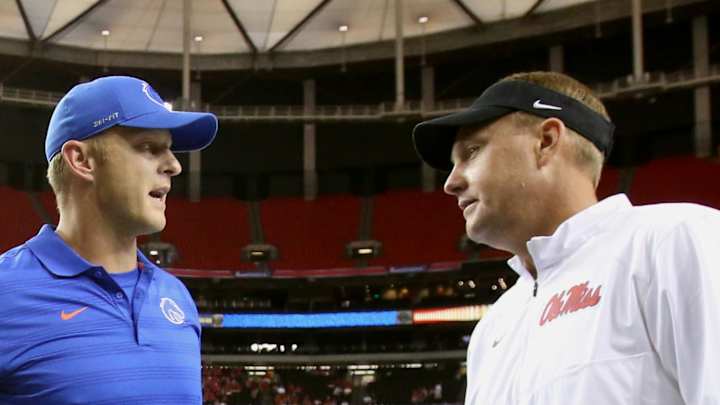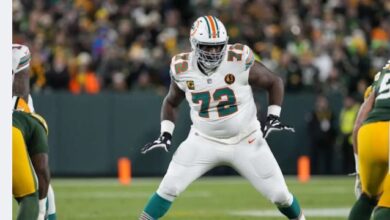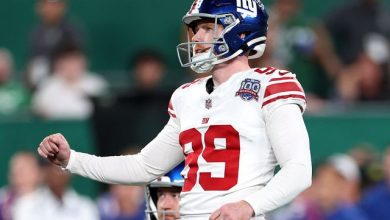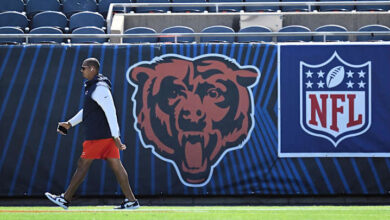
How Bryan Harsin and Hugh Freeze Threw Auburn Football Back into the Great Depression Era
For decades, Auburn University has been one of the marquee programs in college football, standing toe-to-toe with powerhouse schools and making its fans dream of championships. However, the past few years under Bryan Harsin and Hugh Freeze have seen Auburn football plummet into a state that critics are calling “The Great Depression Era of Auburn Football.” What was once a program known for electrifying players, high stakes, and Iron Bowl heroics has turned into a hotbed of controversy, questionable decisions, and on-field mediocrity. Many Auburn faithful are beginning to wonder: can the program ever bounce back, or is it doomed to a slow decline reminiscent of another era entirely?
The Bryan Harsin Experiment: Unfulfilled Promises and Lost Identity
When Auburn hired Bryan Harsin in 2020, it seemed like a bold attempt to inject new life and ideas into the program. Harsin’s success at Boise State had raised expectations. Known for his hard-nosed style, Harsin was supposed to be the program’s new visionary leader who could implement a winning culture based on discipline and toughness. But as time would show, that vision didn’t materialize.
Under Harsin, Auburn quickly lost its edge, its identity, and, ultimately, the confidence of its fanbase. His tenure was marred by constant allegations of locker room rifts, underwhelming recruiting classes, and a general inability to compete with SEC giants like Alabama and Georgia. He was seen as an outsider, someone who didn’t understand SEC culture or the expectations at Auburn. By the time Harsin was fired, Auburn’s football program was already teetering on the brink of collapse.
Enter Hugh Freeze: The Last Hope or Just Another Misstep?
After Harsin, Auburn shocked the nation by hiring Hugh Freeze, a figure controversial not only for his checkered past but for his questionably effective coaching resume. Freeze’s offenses at Ole Miss were undoubtedly potent, but his tenure there ended with NCAA investigations and questions about ethics. Still, the Auburn administration took a chance, hoping that Freeze’s offensive genius could bring some spark back to the program.
Initially, Freeze seemed like a logical choice. Auburn fans yearned for a high-powered offense, and Freeze promised to deliver that. But the results have been disappointing, if not disastrous. Despite high hopes, Freeze has failed to deliver the consistency needed to restore Auburn’s stature. Instead, his time at Auburn has been a mirror image of Harsin’s reign: uninspired performances, recruiting misses, and a program still in search of its identity.
Recruiting Woes: Auburn’s Dwindling Appeal
In college football, recruiting is everything. Nick Saban has shown that year after year, stacking his roster with five-star recruits who fuel Alabama’s dynasty. Kirby Smart is following that same path at Georgia. But at Auburn? Under Harsin and Freeze, the program has struggled to attract top talent. Gone are the days when Auburn could bring in players like Cam Newton, Bo Jackson, or even a solid foundation of highly-rated recruits.
Freeze has tried to implement his own recruiting strategies, but the appeal of playing at Auburn isn’t what it used to be. The roster is thin, the gaps between Auburn and its rivals are widening, and Freeze has shown little ability to close that distance. The program feels hollow, unable to compete with the allure of schools like Georgia, LSU, or Alabama, who dominate the region.
Back to The Great Depression Era: Where Auburn Stands in the SEC
The Southeastern Conference has always been the toughest league in college football, and Auburn’s downward spiral has made that reality painfully clear. Schools that once viewed Auburn as a legitimate threat now view it as a “get-right” game on their schedules. The Tigers are no longer feared in the SEC; they’re just another team struggling to stay afloat. This painful era harkens back to Auburn’s historical lows, a time before the Iron Bowl classics and national championship runs—a time when Auburn football didn’t command respect.
In an era where SEC programs have taken great strides, Auburn is playing catch-up in the worst way. The constant coaching turnover and lack of stability have kept the program in a holding pattern, a limbo that feels eerily reminiscent of the 1930s when Auburn’s football team struggled to remain relevant. Fans are left asking, “How did it get this bad?”
The Hugh Freeze Conundrum: Can He Turn This Around?
Some Auburn supporters still hold out hope that Hugh Freeze can be the program’s savior. They argue that Freeze needs time to implement his system and bring in his recruits. They point to his success at Liberty, where he turned a relatively obscure program into a winner. But those examples ring hollow in the ultra-competitive SEC, where patience is in short supply, and results are everything.
Despite his promises, Freeze’s Auburn offense has been stagnant. His quarterbacks have struggled, the play-calling has been erratic, and the game plans have failed to produce results against SEC defenses. Freeze’s history of NCAA sanctions also looms over the program, leading some to wonder if his tenure will end in yet another scandal.
Cultural Disconnect and Fan Dissent: A Growing Divide
One of the most troubling aspects of this new “Great Depression Era” is the cultural disconnect between the program and its fanbase. Auburn fans are known for their loyalty, but that loyalty is being tested. The Harsin era alienated a significant portion of the fanbase, and while Freeze was initially welcomed, many are growing frustrated with the lack of progress. Social media is ablaze with calls for accountability, and more fans are questioning whether Auburn’s leadership even understands what it means to run a successful SEC program.
Attendance at Jordan-Hare Stadium has dwindled, merchandise sales are down, and Auburn alumni are increasingly vocal about their displeasure with the direction of the program. In an era where fan engagement is crucial, Auburn’s inability to inspire its fans speaks volumes. Without a passionate fanbase, Auburn’s once-proud program feels more hollow than ever.
The Administration’s Role: A Series of Missteps
One cannot overlook Auburn’s administration and athletic department in this mess. The decision to hire Harsin was puzzling from the start, and Freeze’s hiring, while bold, was always a gamble. These decisions reflect a lack of cohesive vision at the top, an issue that goes beyond the coaching staff. Auburn’s leadership has failed to give the program a clear direction, instead bouncing from one “quick fix” to another.
Auburn’s current leadership needs to be held accountable. Until the administration recognizes the damage done by these hiring decisions and the lack of continuity in its approach, the program will likely continue to suffer.
Conclusion: Can Auburn Escape This New Great Depression?
Auburn football is at a crossroads. The program that once had dreams of national championships now finds itself in a cycle of mediocrity, leaving fans and players feeling hopeless. Harsin and Freeze have presided over one of the darkest periods in Auburn’s history, a time that will be remembered for its missed opportunities, questionable decisions, and deep-rooted cultural issues.
If Auburn is to rise from the ashes of this new Great Depression, it will take more than a coaching change. It will require a complete overhaul, a reimagining of what Auburn football means, and a commitment from the top to the bottom to make Auburn competitive again. Only time will tell if Auburn can reclaim its former glory or if the Tigers are destined to languish in obscurity, watching rivals thrive while they struggle to survive. For the fans, players, and alumni, one thing is clear: they deserve better. And until Auburn’s leadership steps up, this depression is likely to continue.








